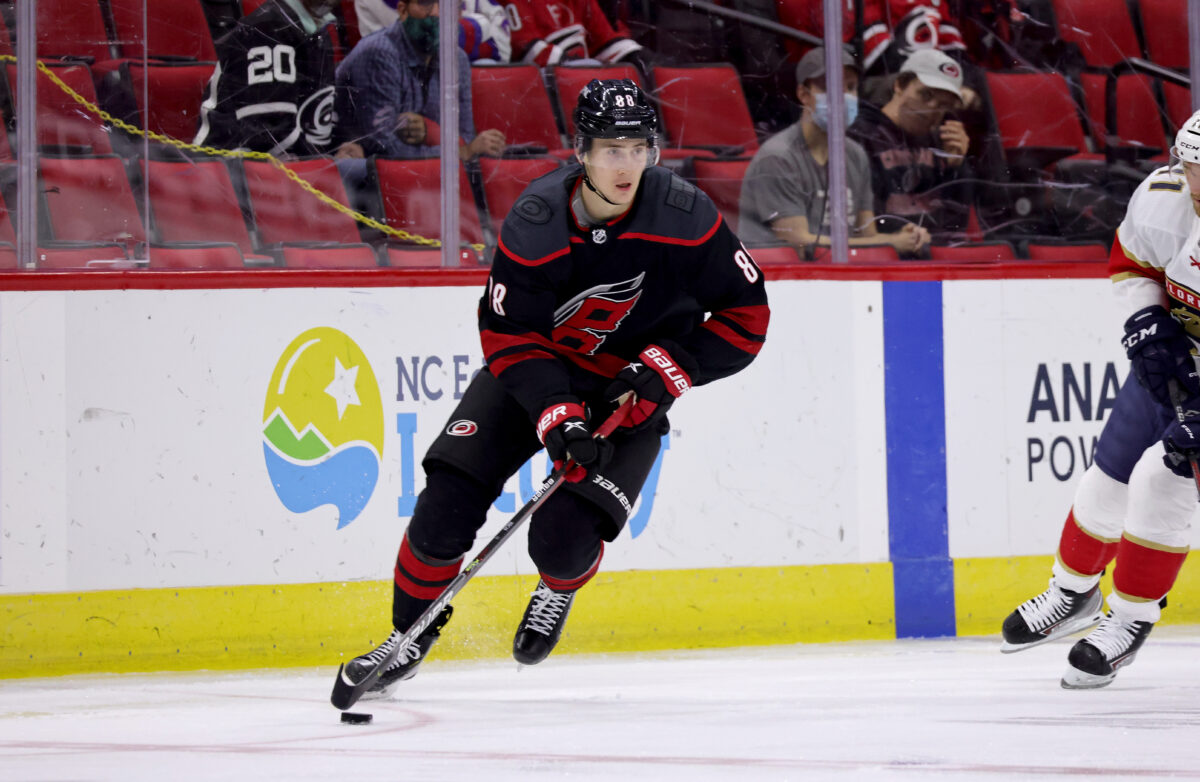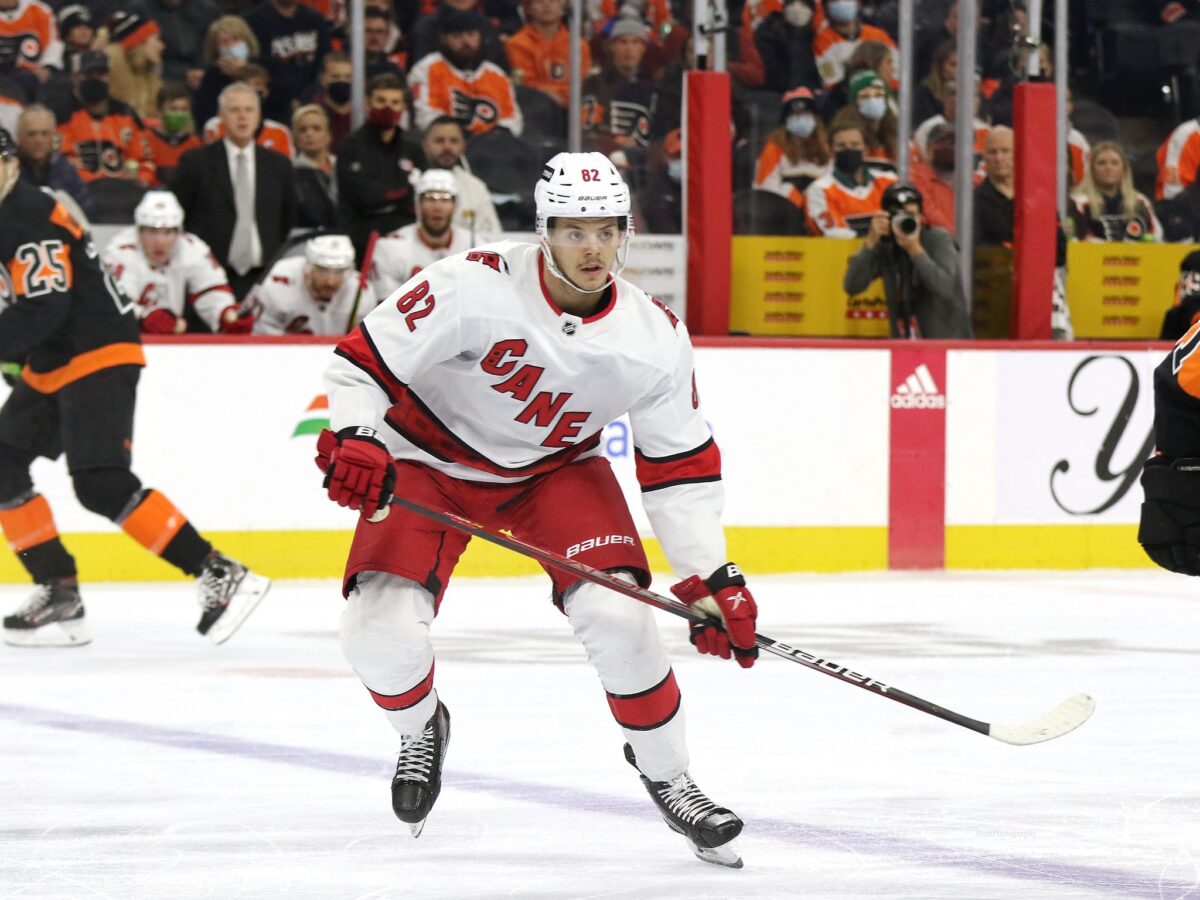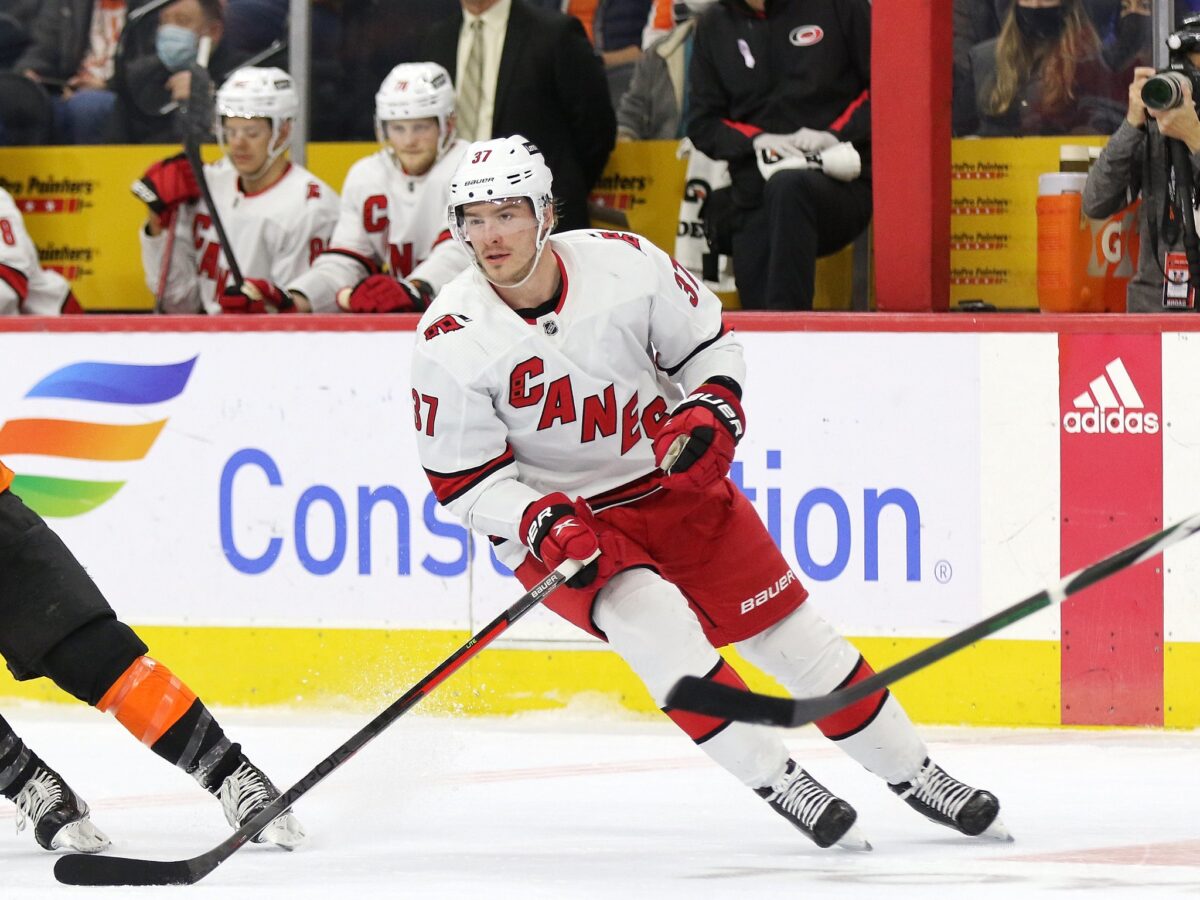Just over a week into the NHL season, the Carolina Hurricanes have been off to a pretty good start, led by the young players, and specifically their second line. Through the team’s first five games, Andrei Svechnikov has six goals and eight points, Martin Necas has three goals and four assists, and Jesperi Kotkaniemi has a pair of assists.
This line has been dominant at both ends of the ice, and the longer they play together, the better they will do. They are clearly an important part of the Hurricanes’ hot start, as even in the 6-4 loss to the Edmonton Oilers, they still managed to collect five points, though they were held off the board in Saturday’s 3-2 loss to the Calgary Flames.

While the trio is typically listed as the second line, Rod Brind’Amour has shown that he doesn’t have preferential treatment when it comes to deployment. We have seen the projected fourth-line play in typical top-six situations, and vice versa. For the purposes of this article, I will be referring to them as the second line.
Continuing Their Development
Svechnikov played the majority of last season with Vincent Trocheck and Necas but also split some time on the top line with Sebastian Aho. The chemistry has carried over from last season with Necas, as they have combined for points on four goals together. Kotkaniemi is a bit behind his wingers in points, with only two assists so far, but his impact hasn’t gone unnoticed.
Kotkaniemi, who is taking a big step into the second-line center spot, currently has a faceoff winning percentage of 57.3 percent, which is among the league’s best. His defensive game has been great, giving Necas and Svechnikov more room to thrive in their offensive roles. There were a lot of questions about Kotkaniemi and how well he would fit into this role before the season started, but so far, he has done exactly what is expected of him.
Advanced Stats Back Them Up
There has been a Tweet going around the internet lately, highlighting some of the top lines around the NHL that have 30 minutes or more playing time together. There have been a few changes to the list, but these stats are as of Sunday (Oct. 23) after the game against the Flames. The Hurricanes’ second line is listed as the eighth-best line sorted by expected goals percentage, according to MoneyPuck. Breaking that stat up a bit, following the same time threshold, the line has the 15th lowest expected goals against, and 18th highest expected goals for. This line has fantastic balance with their dominance at both ends of the ice, and each of them play a role they are thriving in.

Throughout their 60 minutes of ice time as a group, they have scored four goals, and haven’t allowed any. I know, it is only five games into the season, but that is still quite impressive given the fact that there is a significant amount of ice time together. While the majority of this line’s zone starts are in the offensive zone, there have been no struggles on the breakout when they do end up on their own end. Kotkaniemi has been great at winning the board battles above the hash marks and giving one of the wingers a pass with speed.
The Fenwick stat is measured by total unblocked shot attempts for or against a player, line, or team. This second line has generated 55 unblocked shot attempts, while they have only allowed 26, for a Fenwick percentage of 67.9%, which ranks fourth among lines with 30 or more minutes played together.
Keys To Keeping the Hot Start Going
Svechnikov and Necas are both scoring at rates that aren’t realistic to keep up over 82 games, but producing elite numbers is definitely possible. Svechnikov scored just shy of 70 points last season, and Necas, who struggled at times last year, still put up 40 points. While he was typically set as the team’s fourth-line center last year, Kotkaniemi was still able to produce 29 points. If he is able to eclipse the 50-point mark with this significant ice time boost, management, as well as many fans, will be pleased.

This second line, to continue their success, needs to keep Brind’Amour’s trust. There are no indications of that trust slipping yet, but if they begin to struggle defensively, or Kotkaniemi has a hard time finding the scoresheet, there may be a change. Being able to depend on each other to do their jobs is part of what makes this line so effective.
Related: Hurricanes’ Biggest X-Factors For 2022-23
Necas continuing his redemption season is another key factor of success for the group. It is starting to become apparent that his confidence level has a huge impact on his production. If he can continue to produce at a high rate, let’s say 60 points or higher, he will be in a great position for success. He is in the first season of a two-year, $6 million contract, and he is going to be doing everything he can to maximize his next deal.
Playoff Success Could Rely on This Line
I know, I know. The playoffs are so far away, and lines hardly ever stay the way they are 75-plus games down the road, but if they can play anywhere close to this level, it’s not unrealistic to think this line could stick around.
The Hurricanes are looking to make an impact in the playoffs. This group has shown they have what it takes to get there, but the second-round hurdle continues to get in their way. The top line with Teuvo Teräväinen, Aho, and Seth Jarvis is definitely Brind’Amour’s go-to, but this second-line trio definitely has the capability to take over that role in important games.
I have talked a lot about Kotkaniemi and his defensive play, but credit also needs to be given to his wingers. Svechnikov has been winning a lot of puck battles in the defensive zone, and executing smart breakout passes, while Necas has also been a huge part of their transition. As a group, they are able to generate offensive possession on the rush, but can also win those dump-and-chase battles, which is a huge part of what has been making this line so dominant.